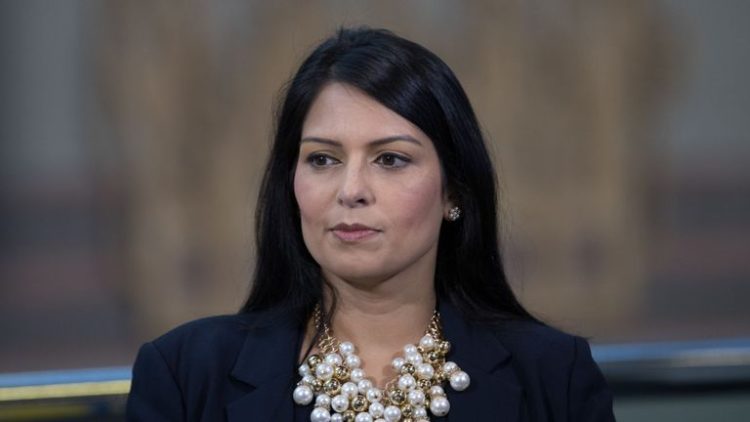By Lucy Caulkett-
The British government has announced a £30 million funding boost to equip law enforcement with pioneering new tech and capabilities to track down more paedophiles operating online and safeguard children who have been abused.
The huge cash to tackle child sexual exploitation and abuse (CSEA) is expected to help target the most dangerous and sophisticated offenders who operate on the dark web. Paedophiles constitute a serious danger to society and damage lives in the process, in many cases having a lasting effect on those affected.
The UK is looking to build on its status as a global leader in tackling child sexual abuse by hosting the WePROTECT Global Alliance summit with the African Union. The summit, to be held in Ethiopia, will bring senior leaders from 130 countries together alongside tech firms and civil society organisations to determine what efforts should be taken to tackle this global issue.
An Online Harms White Paper which includes proposals to compel tech firms to keep children safe online has already been published by The Home Office which plans to publish interim codes of practice that sets out expectations of tech companies in tackling online abuse.
Last July, Home Secretary Priti Patel (pictured)hosted the 5 country ministerial in July, which set out joint actions to combat CSEA and has a commitment to publish a new national strategy to tackle all forms of child sexual abuse.
Home Secretary Priti Patel said:
”Vile predators who prowl the internet abusing children are cowards who need to be caught and punished. That’s why it’s essential we give our law enforcement agencies the support, resources and powers they need to bring them to justice.
This extra £30 million will help do this – ensuring online paedophiles are no longer able to hide in the shadows preying on our society’s most vulnerable.
GLOBAL REGISTRATION
Statistics from the National Crime Agency (NCA) show that last year 2.88 million accounts were registered globally across the most harmful child sexual abuse dark web sites, with at least 5% believed to be registered. Further investment will be made in the UK’s world-leading Child Abuse Image Database (CAID), a resource that provides law enforcement agencies with effective tools to search seized devices for indecent images of children. The investment is expected to reduce the time taken to identify illegal images of children and increasing the ability to identify victims.
The new funds being made available will explore adding enhanced Artificial Intelligence (AI) tools to the system, including voice analytics and age estimation.The government has also announced it will be co-hosting a major child sexual abuse summit in December in Africa to drive the international response.
They add to earlier funds by the Home Office this summer to CAID, which included rolling out a new a fast-forensic tool, image categorisation algorithms and scene matching technology. AI tools like these can be used to identify and class images, speed up investigations and take the burden of viewing images off police officers.
Prime Minister Boris Johnson said:
”The internet has revolutionised the world by opening up society, facilitating the exchange of ideas, increasing the flow of goods and empowering people in a way many never thought possible. Yet while the internet can be an immeasurable force for good, it can also be used to provide a safe space for criminals.
That is why are taking further steps to combat those who use the internet to prey upon children. Just as we’re giving the police more resources and recruiting 20,000 more officers to keep our streets safe, we are also putting more money and the very best of our world-leading technical abilities into catching offenders operating in the dark web.
Fred Langford Deputy CEO and CTO at the IWF said:
”We are delighted the government has committed more funding to fight the spread of child sexual abuse online.
Last year our analysts removed over 105,000 webpages from the clear web. Each page can contain thousands of individual indecent images of children. The IWF is the only non-governmental body with access to the Child Abuse Image Database. This collaboration is vital to ensuring that these images are prevented from being spread online and I am pleased to see that some of the funding has been allocated for further developments of that system”.
RISING TREND IN DARK WEB
Since 2016, the IWF has seen a rising trend in “commercial” hidden services, websites hosted within proxy networks (dark web), dedicated child sexual abuse websites offering child sexual abuse imagery for sale. In 2018, we identified 85 new hidden services, 47% of which were assessed as being commercial. We have also seen greater levels of encryption has made these services much harder to locate and it is clear that we have to keep pace with new offending behaviours.
The funding, announced as part of the Spending Round, will build on previous resource to tackle the complex issue of offending on the dark web. Previous funding has helped expand the NCA and GCHQ Joint Operations Team, while the NCA has also established its Dark Web Intelligence Unit- a team tasked with gathering intelligence and patterns on dark web offending.
PROSECUTIONS
Law enforcement have already had a number of successes with prosecuting criminals operating on the dark web. Kyle Fox, from Surrey, was jailed for 22 years in March after sexually assaulting a three-year-old on the dark web. The NCA launched an investigation and traced the suspect to his home in the UK. The suspect’s face was not visible in the abuse videos, but investigators were able to use specialist capabilities to piece together clues, including clothing, to identify him and both victims. Last year Dr Matthew Falder pleaded guilty to 137 offences linked to the dark web.




